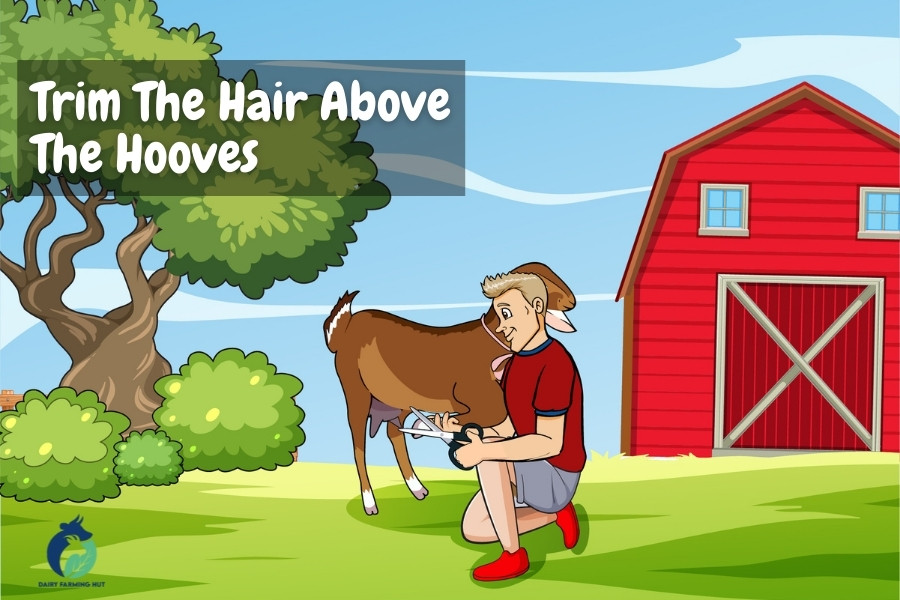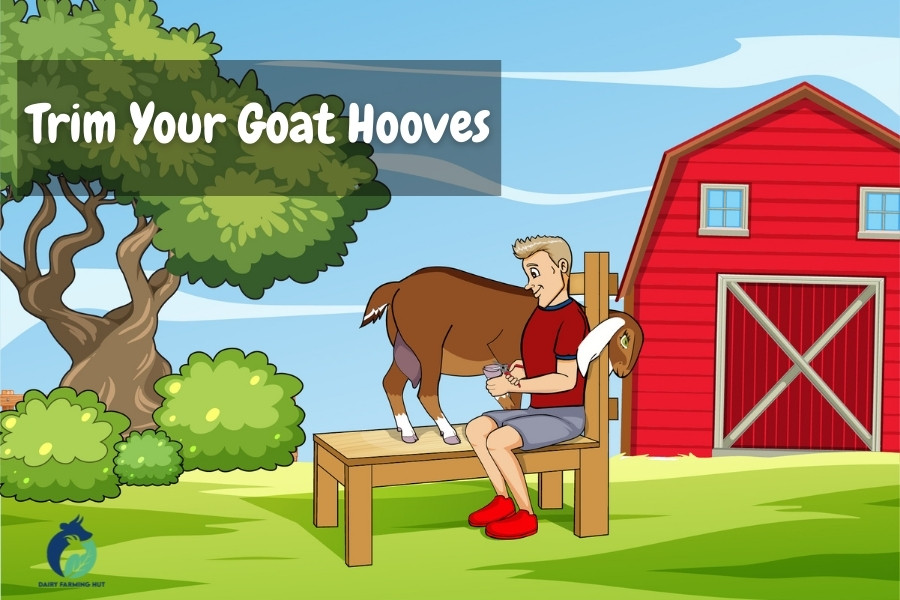The world of dairy goat shows is full of standards and strict requirements. To give yourself the best chance of success in a dairy goat show, great emphasis should be placed on effective grooming and trimming practices.
General appearance can constitute upwards of 50% of your goat’s score in the show ring, so it’s crucial that you take the time and get this right. This guide will cover the process that makes a dairy goat show-worthy.

1. Before You Clip Bathe Your Goat and Untangle the Fur
It is highly recommended that you properly bathe your goat to clean and untangle the fur before clipping a goat for show. This will greatly improve the experience for the animal as the soap will add moisture and hydration into the fur, making it far easier to cut while also reducing painful snags.

2. Thoroughly Rinse all the Soap and Cleaning Products
Make sure to thoroughly rinse all the soap and cleaning products from the animal before the trimming begins. Try to use a product that will not irritate the animal’s eyes. The last thing that you will need in the show ring is a winking goat, not to mention the trouble they might give you the next time you attempt to give them a good scrub.

3. Selecting a Trim Style
Selecting the appropriate style, and committing to it, can make or break you in certain competitions. There are two styles of a clip that you may choose for your dairy goat.
The summer clip is best used in the warmer part of the year. If you live in a warmer climate, you will see this as your standard style of trim.
The summer clip is a shorter trim that is used when the weather is warmer. Choose this style when you are showing during the months from May to August. Be careful not to let your goat stay in the sun too long with this trim. They will be much more susceptible to sunburn after this trim.
The winter clip will be much more appropriate for the cold, wet months of fall and winter.
The winter clip’s name is a little misleading. This style involves a mix of short trimming and blending of existing fur. What this achieves is a blend of short trimmed fur to long, flowing fur. Despite the name, this trim would be very uncomfortable in cold and damp conditions. Make sure your goat has proper protection from the elements when not in the show.

4. Start Trimming Process
Steps for Summer Clip Process
- Once you have washed your goat and settled on the more simple summer clip, you will begin the trimming process by cutting away the hair from the body. Go against the hair for an easier experience with the trimmer.
- Make sure that all of the body hair is evenly trimmed. This can also be achieved with scissors or shears, but electric clippers are much more efficient.
- After the hair has been trimmed away from the body by using a larger blade on the trimmer, it is time to switch to a smaller, more precise blade. The larger blade, also known as a plucking blade, is the best to use for removing large quantities of fur in a big space, but the smaller blade will help you get those hard-to-reach spots.
- Take your smaller blade; most use a number 10 and begin trimming the neck, face, lower legs, and underbelly. Make sure to get the ears and around the eyes. These are commonly missed places that judges will go to first.
- If you are trimming a doe, it is important to remove the beard. Ensure that you trim this last, or you will struggle to control her with nothing to grab.
- Lastly, for this style, you will trim the udder with an extra-fine blade. Most people will use a number 30 blade or similar. To make the process as easy as possible, it is recommended that you trim the udder when it has about a day’s worth of milk in it. This will ensure that you have a firm surface to trim against.
It is recommended that the initial trim of your goat is completed two to three weeks before the show with a touch-up of high-interest areas such as the udder, head, belly, and lower legs a few days prior.
The Winter Clip
- This style is a little more tricky but is done to help the goat maintain healthy body heat before shows.
- You will leave the body hair intact but trim the areas of focus like the head, ears, lower legs, and udder.
- The goat is still losing fur in areas that emit a significant amount of heat, making sure that they are protected from the elements.
- The key to this style being performed correctly rests in your ability to fade the short and long hair seamlessly.
- This will ensure handsome lines and showcase the quality of care you provide your dairy goat.
- It may be appropriate to trim a small amount of the body hair to better showcase the animal’s features. This is up to you.

5. Trim The Hair Above The Hooves
Take a pair of scissors or an extra-fine blade trimmer to the hair above the hooves. Trim away wild and stray hairs from above and around the hoof. Make sure to lift the hoof and trim in between as well. The tail’s hair should not be too long; an inch from the bone is fine. Trim the tail hair with a straight line for the best results.
Watch this video to get more insight into clipping a goat for show.
6. Trim Your Goat Hooves
Do not forget to care for the goat's hooves before your upcoming show. This goes into the animal's score for overall appearance and should not be neglected. Take care not to injure the goat by trimming away too much from the hoof. So much of a goat's health can be affected by the conditions of their hooves.

The next step in getting your animal show-ready is to trim away the excess on the hooves. This excess can hinder the goat's ability to walk properly if neglected long enough. In most cases, though, it just looks less uniform.
This step should be completed one to two weeks before the show. Make sure not to trim too closely that it causes pain and discomfort when walking. Not only will this hinder your chances in the event, but it is also very harmful to the health of the goat. If you do trim a little too far, you must keep the hoof dry and clean.
You can use knives, pruning shears, and files for this process. Make sure that whatever you use is sterile and clean.
It is also recommended that you wash away dirt and debris from the hooves to judge the growth rings better. This can be the difference between a good square hoof and a mismatched, uneven one.
Begin by cutting away any overgrowth. Your goal should be to make the hoof wall level with the sole. Keep the sole parallel to the hoof's growth rings. Make sure that the heels and the dewclaws are neat and uniform. File down any remaining rough area to ensure the hooves are squared off and clean.
Watch this video for some great and simple tips on Hoof trimming.
Also Read: How Much Space Do Dairy Goats Need
Conclusion
To give yourself the best chance of success, it is important that you follow this guide. Dairy goat showing is a critical competition with tons of areas of scrutiny. Particular interest is placed on overall appearance, sometimes making up half of your score. Properly trimming your goat is an absolute must in these competitions.
When you follow this guide and do not cut corners, you will find that the world of goat-showing isn’t so complicated. Just be patient and go the extra mile to ensure your dairy goat looks its best!
